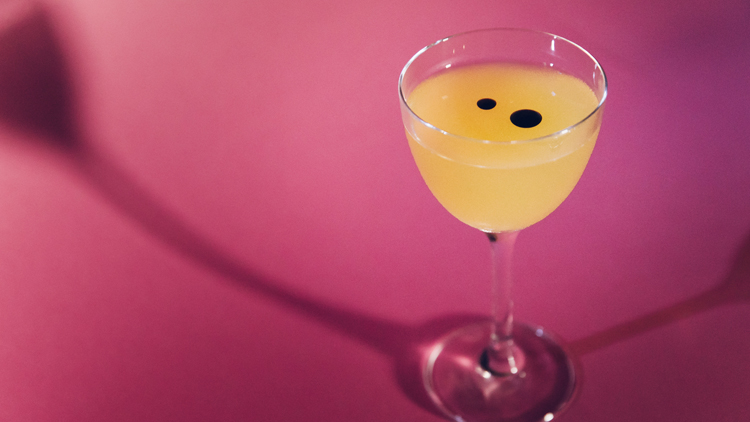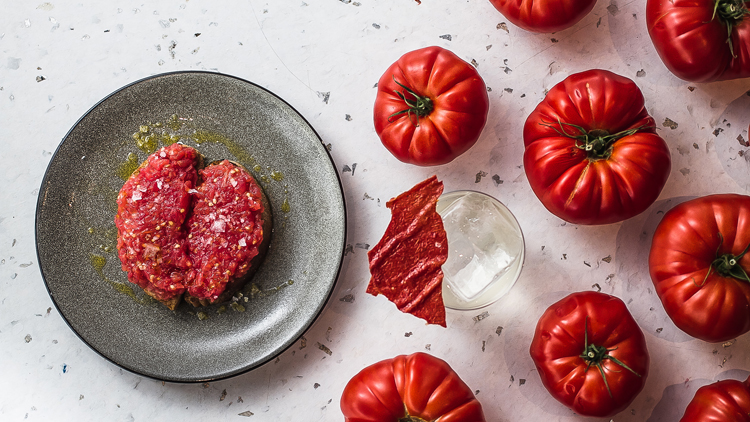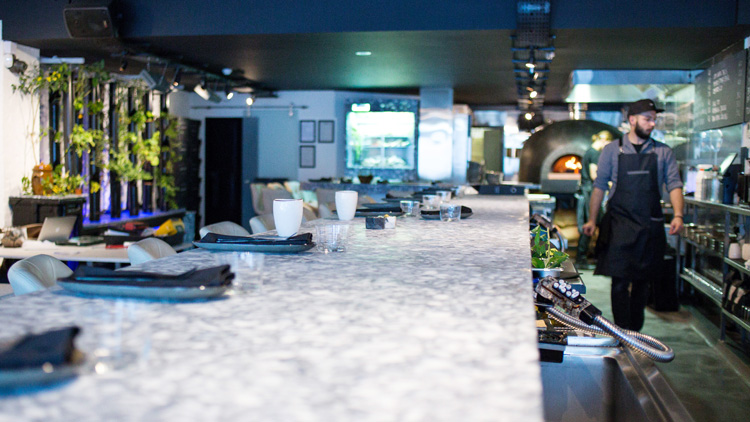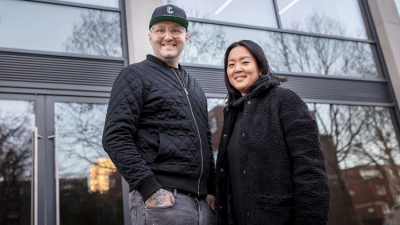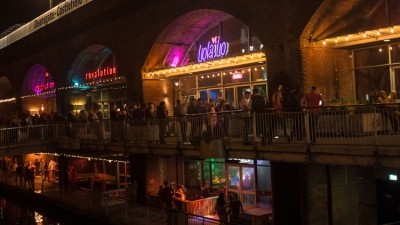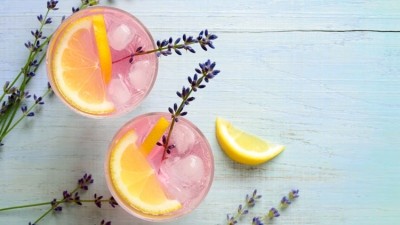The new-wave bars combining cocktails with food
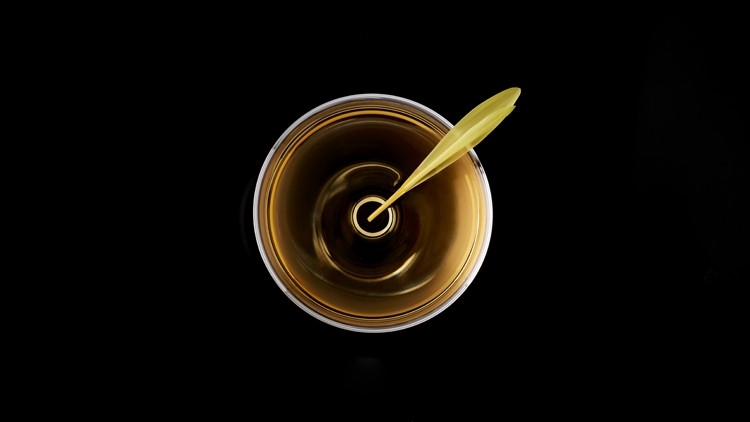
It's not about thinking as a bar and a kitchen, it is about being one organism, says famed bartender Alex Kratena, co-founder of the newly-opened Tayer + Elementary in London’s Old Street.
Kratena and other bartenders at the top of their game are pursuing a stronger relationship between what’s in the glass and what’s on the plate. A movement that not only speaks to continued consumer interest in food and drink, but also makes sense from an economic and sustainability perspective.
The former head bartender of Artesian at The Langham Hotel (four times winner of The World’s 50 Best Bars) opened Tayer + Elementary last month in partnership with fellow internationally acclaimed bartender Monica Berg.
The venue has not one but two bars: the simple, casual all-day Elementary to the front, with its draught cocktails and bottomless coffee, and the more ‘progressive’ Tayer. There are no branded bottles – instead medicine-style bottles house bespoke spirits made to the bar’s specifications, as well as other spirits that are decanted from bulk containers, reducing glass waste.
The food offer, which has been designed in partnership with Zijun Meng and Ana Gonçalves’s T T Eatery, is casual for Elementary, while Tayer’s has been developed alongside the cocktails and is a little more involved.
Ingredients move between spaces, with leftover rhubarb from the bar going back to the kitchen for desserts, while bread scraps from the kitchen are used to make kvass, a fermented bread drink.
The cocktail menu has no theme, instead being dictated by what’s available. Drinks are named only by a list of ingredients, with key flavours in bold. Non-alcoholic serves are not singled out – they simply follow the same format as all the other drinks (though they are a bit cheaper). When something is running low – vanilla on our visit – there is a note on the menu to say that new drinks may be deployed.
In Sheffield, The Rockingham Group’s Public bar, winner of Observer Food Monthly’s 2018 Best Place to Drink award, takes a similar approach to using every part of an ingredient.
“Our cocktail menu is based around different suffixes of the word ‘Public’,” says general manager Jack Wakelin. “‘Public Awareness’ is a section that aims to minimise waste from the bar and kitchen. We take items such as unused ends of sourdough bread... ends of charcuterie and cheese rinds to re-use as cocktail ingredients. The kitchen burns our waste citrus peels before running them through a Thermomix with a local rapeseed oil to create a burnt citrus oil.”
In Bournemouth, James Fowler from CLASS magazine’s 2019 Sustainable Practices winner Terroir Tapas says there is now a stronger correlation between food and drink. “We are seeing more shared ingredients,” he says, giving the example of the venue’s pan con tomate dish. “We use the dehydrated tomato skins for a drink and ferment the water waste from the tomato for our Margaritas,” he says.
Prep time
This symbiotic approach to food and drink means more prep time behind the bar which, in turn, is changing the bar space itself. At Tayer, Kratena and Berg used VR to design the optimal bar and workspace – and it is about the same size as the kitchen. Gadgets, though, remain behind closed doors.
“You don’t need to impose your rotovap on the guests, they don’t care,” says Kratena. “There are a lot of bars that use pseudoscientific terms on menus and it puts customers off. If someone wants to know about a process, we can discuss it but the reality is that most people don’t want to know.”
Across London at the newly-opened Kwānt, there is a similar sentiment towards prep and presentation. The Mayfair bar is the first solo venture from Erik Lorincz, former head bartender at American Bar at The Savoy – World’s Best Bar 2017 under his leadership.
As a basement bar with a tropical theme, Kwānt is a million miles from Tayer + Elementary’s clean, industrial feel. Yet Lorincz is also exploring culinary techniques and taking prep to the next level. A secret door hidden in a wall panel once led to the club’s VIP area: now, it has been given over to a stainless steel preparation space.
Shelves are lined with kombuchas and ferments at various stages of development, while bags of lacto-fermented purple carrots are stacked up, waiting for their turn in the bar’s Hacienda cocktail.
“More is happening behind the scenes,” says Lorincz of the changes in cocktail culture. “Bars are spending more time on preparation. I purposely didn’t want to open until 5pm, so we can have the day to prep.” He also believes more prep leads to a better customer experience. “People don’t want to wait 20 minutes for a drink.”
He does believe, however, that cocktail drinkers have a new-found desire to explore fresh flavours, which has led to more homemade ferments and distillates. Both Kwānt and Bournemouth’s Terroir Tapas also make use of Evogro, an in-house plant growing system that allows garnishes to grow from seed to plant all year round.
Public’s Wakelin says greater attention to preparation has grown up around places like Tony Conigliaro’s 69 Colebrooke Row. “Homemades are an essential part of any bar now, the huge amount of book releases by drinks industry peers help this.”
Blurring the lines
Just as diners expect a decent cocktail in a restaurant, good food is becoming essential to the bar. And as a wider trend towards convenience as well as economic factors come into play – it’s getting increasingly difficult to make money from a venue that serves no food and opens at 6pm in the evening – more venues blur the lines between spaces for eating and spaces for drinking.
Although there is a chef ’s counter where diners can enjoy a tasting menu, Kratena says Tayer + Elementary is a bar “where equal attention is given to all elements”. There is, of course, another reason for the set-up. “There’s an economic factor – we need to maximise trading hours,” Kratena explains. “Also, people are interested in everything that surrounds a beverage – it goes beyond cocktails.”
Meanwhile, “sociable eating and drinking” is key at Terroir Tapas.
“The style of service is quicker than a restaurant and I’d say the dwell time is half,” says Fowler, who also operates Bournemouth restaurant The Larder House.
“Terroir Tapas is designed so you can see everything – the chefs, the bar – it’s a more immersive experience than sitting at a table.”
For these boundary-pushing bartenders, cocktails go beyond just drinks. What’s inside the glass has to work in harmony with everything outside the glass.
Style and substance
A more complex approach to making drinks has inspired more straightforward presentation. Kwānt’s Erik Lorincz says the gimmicky glassware phase is passing, with serves and garnishes becoming more simple. He favours thin glass, made by Slovakian glass company Rona. Glasses are designed to his specifications for holding particular styles of drink, such as a highball.
“I want to elevate the experience – like if you were enjoying a Burgundy wine from the proper glassware,” he says. Garnishes he describes as “gentle”, and a gin, lemon and spirulina cocktail, called Green Pony, comes adorned with a small clump of pea shoots.
Public’s Jack Wakelin also prefers the liquid to speak for itself and uses hydrosols to leave “most drinks ungarnished to the eye”, and served in elegant glassware.
At Tayer + Elementary glasses are simple and stylish with ‘Yakisugi’ bark-textured water glasses from Lasvit and a tasteful core range from Mark Thomas.
“Rather than design the glassware ourselves, we decided to work with different designers,” Alex Kratena says. These are glasses that ensure the drinks do the talking – and they are a far cry from the elaborate fashions of a few years ago, when Kratena’s Artesian vessels ranged from pineapples and pandas to Salvador Dali-esque elephants.
